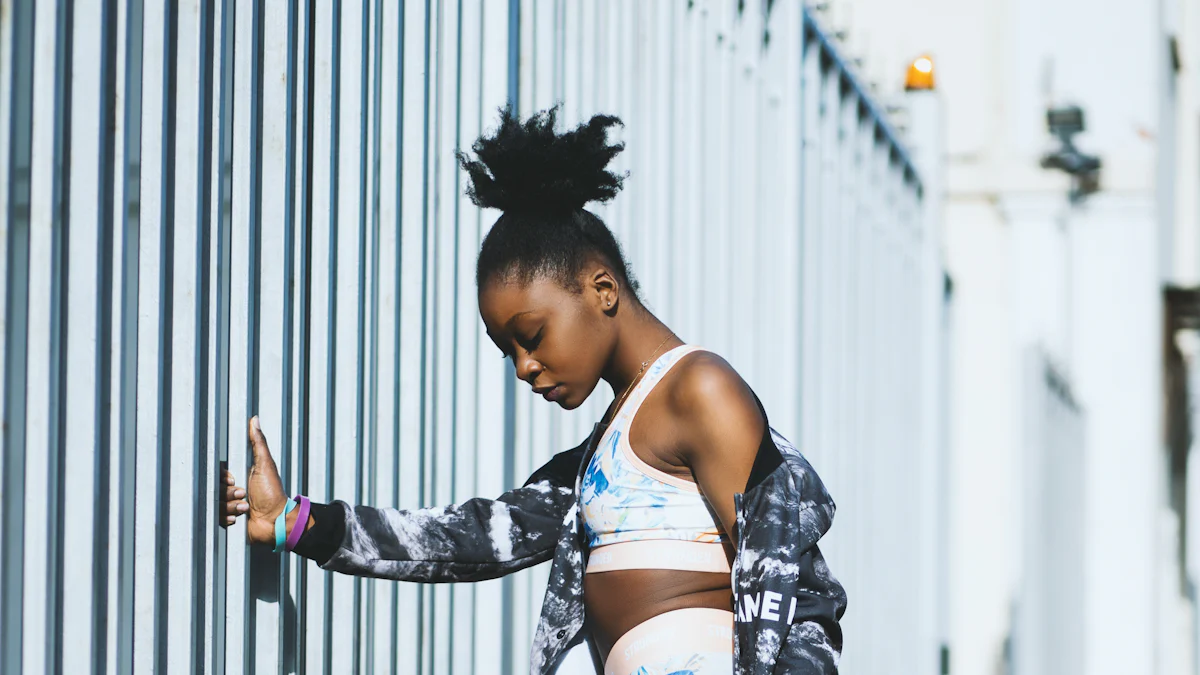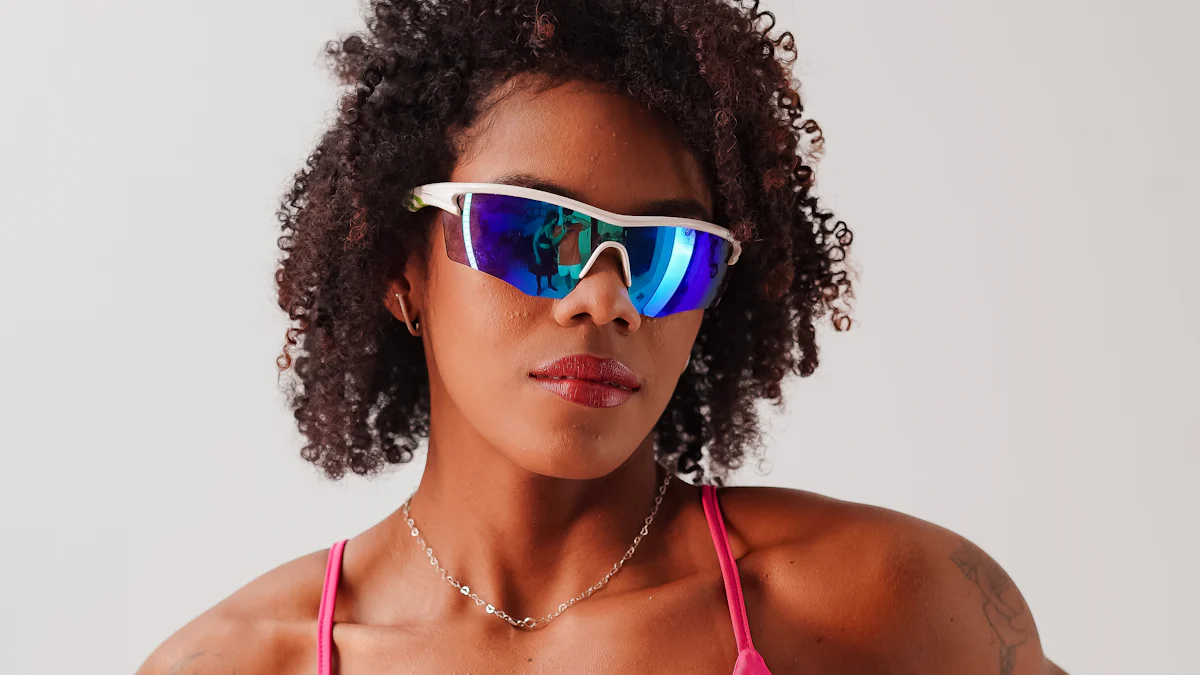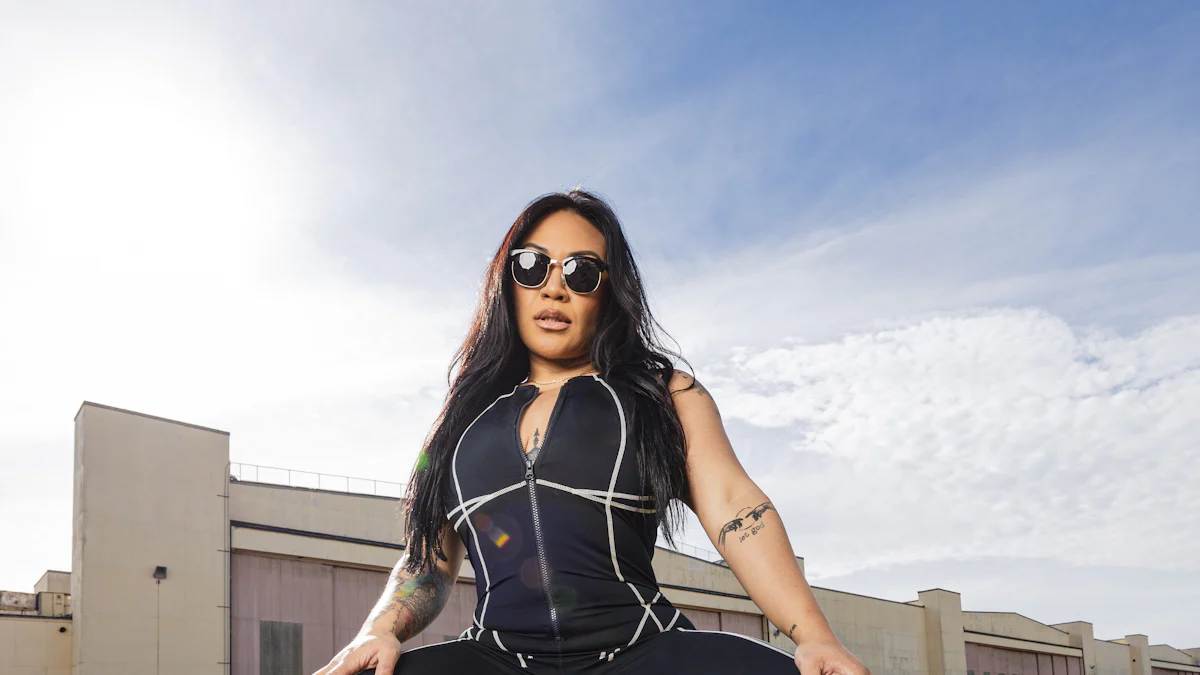The Rise of Athletes as Fashion Influencers

Athletes are no longer just dominating the courts or fields—they’re making waves in the fashion world too. Their influence extends beyond sports, shaping trends and redefining style. Take Roger Federer’s $300 million partnership with Uniqlo, for example. It’s proof of how athletes can drive massive value in the fashion industry. Platforms like Shopify now allow them to connect directly with fans, further fueling this trend.
Social media has amplified their reach. Caitlin Clark, with over a million Instagram followers and a 17% engagement rate, shows how athletes excel in influencer marketing. This shift, supported by new NIL rules, lets brands focus on engagement and authenticity. So, how can your brand tap into this growing power?
Key Takeaways
Athletes are becoming fashion leaders, changing trends and styles outside of sports.
Social media helps athletes reach fans and share their fashion looks.
Athletes and brands work together to make real partnerships that people like.
Using AI tools such as Lillian helps brands track success and change plans quickly.
The Evolution of Athletes in Fashion and Marketing

From Sports Icons to Style Icons
Athletes have always been admired for their talent and determination. But today, they’re also celebrated for their style. You’ve probably noticed how athletes like Serena Williams or LeBron James are just as comfortable on the runway as they are on the court. They’ve become symbols of confidence and individuality, inspiring fans to embrace their unique fashion sense.
This shift didn’t happen overnight. It’s the result of athletes stepping into the spotlight beyond their sport. They’re not just endorsing products anymore—they’re creating them. Collaborations between athletes and brands have redefined what it means to be a style icon. Think of Michael Jordan’s partnership with Nike, which gave us the iconic Air Jordan line. These collaborations don’t just sell products; they tell stories that connect with fans on a deeper level.
The intersection of sports and fashion has created a new space where athletes can express themselves. Their influence goes beyond performance gear. They’re shaping everyday trends, proving that style and athleticism go hand in hand.
The Role of Social Media in Amplifying Athletes' Fashion Influence
Social media has completely changed the game for athletes. Platforms like Instagram allow them to share their fashion choices with millions of followers instantly. You’ve probably seen Cristiano Ronaldo’s sleek suits or Simone Biles’ casual-chic outfits pop up on your feed. These posts aren’t just about looking good—they’re about connecting with fans and influencing trends in real-time.
Athletes are no longer just faces for brands; they’re storytellers. Social media gives them the power to showcase their personality and style directly to their audience. This personal connection makes their influence even stronger. It’s why brands are eager to partner with athletes who can authentically represent their values.
The rise of socially savvy athletes has also brought more diversity to the fashion world. They’re breaking stereotypes and showing that style has no boundaries. Whether it’s streetwear or high fashion, athletes are leading the charge and inspiring fans to follow their lead.
The Convergence of Sports, Fashion, and Influencer Marketing

How Sportswear Brands Pioneered Athlete-Fashion Collaborations
Sportswear brands have been at the forefront of blending athletic performance with cutting-edge fashion. These collaborations have redefined how fans view sports apparel, turning it into a lifestyle statement.
Paris Saint-Germain (PSG) teamed up with Dior to create a collection that combines tailored blazers with sleek sneakers, merging luxury and sportswear.
The New York Yankees partnered with Supreme, blending the Yankees' iconic logo with Supreme's edgy streetwear vibe.
Manchester United joined forces with Balenciaga, introducing avant-garde designs to traditional football kits.
The Golden State Warriors collaborated with Off-White, fusing basketball culture with industrial design elements.
Juventus worked with Gucci to create a sophisticated collection that reflects both luxury and sports history.
These collaborations have blurred the lines between sports fandom and fashion loyalty. Fans now see sportswear as more than just gear—it’s a way to express personal style and cultural relevance.
Examples of Successful Athlete-Fashion Partnerships
Athlete partnerships have taken these collaborations to the next level. For instance, the Brooklyn Nets and KITH launched a limited-edition collection that sold out almost instantly. PSG’s partnership with Dior brought high fashion into the sports world, while the Golden State Warriors’ collaboration with Off-White showcased the power of blending basketball culture with modern design.
These partnerships work because they align the brand’s identity with the athlete’s ethos. Athletes bring authenticity and credibility, which resonate with fans. By associating with world-class athletes, brands elevate their image and expand their reach. This strategy has proven effective for companies like Nike, whose collaboration with Michael Jordan remains iconic decades later.
Social Media as a Catalyst for Athlete-Driven Fashion Trends
Social media has amplified the power of collaboration between athletes and brands. Platforms like Instagram and TikTok allow athletes to showcase their style to millions of followers instantly. When Cristiano Ronaldo posts a photo in a tailored suit or Serena Williams shares her latest streetwear look, they’re not just sharing outfits—they’re setting trends.
This direct connection with fans makes social media a game-changer. It allows athletes to act as influencers, driving engagement and boosting the visibility of their brand partnerships. The result? A ripple effect where fans adopt these styles, turning them into global trends. Social media has made it easier than ever for brands to tap into the influence of athletes and create campaigns that resonate with diverse audiences.
How Lillian Can Help Brands Leverage Athletes in Influencer Marketing
Identifying Athletes Who Align with Brand Values
Finding the right athlete for your brand is crucial. It’s not just about picking someone famous—it’s about choosing someone who genuinely represents your values. Lillian simplifies this process by analyzing key factors like demographic alignment, value proposition match, and authenticity.
Criteria | Description |
|---|---|
Demographic Alignment | Overlap in age, geographic relevance, cultural resonance, and lifestyle compatibility. |
Value Proposition Match | Alignment of athlete's personal brand values, performance attributes, social causes, and content creation capabilities. |
Importance of Authenticity | Ensuring the partnership feels genuine to enhance fan engagement and partnership success. |
Lillian helps you identify athletes who not only use or support your product but also resonate with your target audience. This ensures that your influencer partnerships feel authentic and drive meaningful connections.
Analyzing Social Media Metrics for Strategic Partnerships
Social media presence is a game-changer in influencer marketing. But how do you know if an athlete’s profile is the right fit? Lillian dives deep into social media metrics to give you clear answers. It evaluates total engagements, engagement rates, and audience growth to predict the success of potential athlete partnerships.
For example, athletes often have engagement rates 15 times higher than average influencers. Caitlin Clark’s 23% engagement rate highlights the power of athlete-driven campaigns. Lillian also reviews past collaborations and public perception to ensure your partnerships align with your goals. With these insights, you can confidently choose athletes who will amplify your brand’s message.
Providing Insights into Emerging Trends and Opportunities
The fashion world is constantly evolving, and athletes are at the forefront of these changes. Lillian keeps you ahead of the curve by identifying emerging trends like inclusivity, sustainability, and the rise of luxury-athletic collaborations. Athletes like Megan Rapinoe are championing inclusive fashion lines, creating opportunities for brands to connect with diverse audiences.
Lillian also tracks the growing popularity of athleisure and streetwear, which blur the lines between athletic wear and casual fashion. By analyzing these trends, Lillian helps you craft innovative campaigns that resonate with Gen Z and beyond. Whether it’s integrating technology into designs or collaborating with athletes on custom collections, Lillian ensures your brand stays relevant in a competitive market.
Enhancing Campaign Effectiveness with Data-Driven Strategies
When it comes to influencer partnerships with athletes, data-driven strategies can make all the difference. You want your campaigns to not only look good but also deliver measurable results. That’s where setting clear goals and using analytics tools come into play.
Start by defining your key performance indicators (KPIs). These could include engagement rates, audience growth, or even sales. Once you’ve set your goals, track your campaign’s performance using analytics tools. This helps you see what’s working and what’s not. For example, if an athlete’s post is driving high engagement but low conversions, you can tweak your approach in real-time.
Here’s how you can enhance your campaigns with data:
Set KPIs that align with your marketing objectives.
Use analytics tools to monitor performance and gain insights.
Adjust your strategies based on real-time data to maximize impact.
You can also use data to tailor your influencer partnerships. By segmenting your audience, you’ll know which athletes resonate most with your target demographic. This ensures your campaigns feel authentic and connect with the right people. Interactive content like polls or quizzes can further boost engagement, making your campaigns more dynamic and memorable.
Measuring ROI is another critical step. Look at metrics like engagement rates, brand sentiment, and sales correlation. These numbers tell you if your campaign is hitting the mark. Collaborating with athletes during major events can amplify your reach and create a buzz around your brand.
Data isn’t just about numbers—it’s about making smarter decisions. By leveraging insights, you can create campaigns that not only showcase fashion but also drive meaningful results for your brand.
Athletes have a unique charm as fashion influencers. They bring authenticity to their content, making it relatable and engaging. Their collaborations with brands often result in exclusive collections that attract fans and fashion enthusiasts alike. This crossover between sports and fashion fosters a sense of community and expands reach beyond traditional audiences.
Serena Williams’ partnership with Nike stands out because it reflects shared values like inclusivity and excellence. Similarly, Kevin Durant’s creative input in Nike’s 'KD' shoe line shows how personal touches can elevate brand partnerships.
Looking ahead, digital platforms will play a bigger role in athlete-driven fashion. E-commerce makes it easier for athletes to launch their own lines, while virtual fashion shows break geographical barriers. Sustainability and tech integration, led by figures like Venus Williams, are also shaping the future of athlete collaborations.
Lillian can help you stay ahead by using AI to analyze fan behavior and optimize sponsorship deals. It simplifies the process of identifying the right athletes, crafting authentic campaigns, and tracking performance. With Lillian, you can create partnerships that resonate and keep your brand competitive in this evolving space.
FAQ
What makes athletes effective fashion influencers?
Athletes bring authenticity and relatability to fashion. Their personal stories and achievements inspire fans, making their style choices more impactful. Plus, their massive social media followings amplify trends, turning outfits into must-haves.
How can brands choose the right athlete for a partnership?
Focus on alignment. Look for athletes whose values, audience, and style match your brand. Tools like Lillian analyze metrics like engagement rates and audience demographics to help you make informed decisions.
Why is social media crucial for athlete-driven fashion campaigns?
Social media connects athletes directly with fans. Platforms like Instagram and TikTok let them showcase their style in real time, creating trends and boosting brand visibility. It’s the fastest way to turn a partnership into a global phenomenon.
Can smaller brands collaborate with athletes?
Absolutely! Micro-influencers and rising athletes often have highly engaged audiences. They’re more affordable and can create authentic connections with niche markets. Lillian helps you identify these hidden gems for impactful partnerships.
What trends should brands watch in athlete-fashion collaborations?
Keep an eye on sustainability, inclusivity, and tech integration. Athletes are driving these movements, from eco-friendly collections to virtual fashion shows. Staying ahead of these trends ensures your brand remains relevant and innovative.
💡 Pro Tip: Use tools like Lillian to track emerging trends and find athletes who align with your brand’s vision.
See Also
Winning Social Media Tactics for Fashion Brands in 2025
Key Influencer Marketing ROI Insights for 2025 Growth
Proven Techniques to Enhance Influencer Marketing ROI in 2025
Best Analytics Tools for Influencers to Use in 2025
Leveraging Data Analytics with Influencers for Career Growth in 2025
